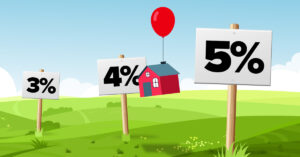U.S. industrial real estate transaction volume rose 8% year over year in the second quarter of this year — a mildly surprising figure given the sector’s relative muscle of late. According to MSCI Real Assets, current economic conditions are being compounded by reactions from big market players, aggravating a slowdown that was already underway.
To be clear, it’s not that the property class suddenly finds itself in rough shape. The industrial sector tallied $35.4 billion in deal volume from April through June, trailing only multifamily housing among asset classes during the quarter, according to MSCI data. But after logging growth rates in double-digit percentages over the four prior quarters, the drastic slowdown in dollar-volume gains is jarring at first glance.
Regression was certainly expected, with deal activity in 2021 pushed to new heights thanks to the pandemic-era online shopping boom. Investors flocked to the sector thanks to a growth spurt in demand for more warehousing, transportation and logistics facilities, particularly propelled by Amazon, easily the sector’s largest occupier.
The recent shifts in the economy, however, have given even the e-retail giant room for pause. Amazon reported a net loss in the first quarter. Lee & Associates recently reported that Amazon, which accounted for up to 20% of North American industrial demand in 2020 and 2021, looks to be disproportionately trimming some smaller spaces from its budget, especially in multitenant properties.
When Amazon makes a sound in the industrial-property space, everyone in the market listens, and the implications of its recent moves are already affecting the landscape. With e-commerce sales decelerating and the rising interest rate environment already cooling transaction activity, the dip in deal volume makes plenty of sense in context.
Still, there are reasons for positivity. In fact, the actual level of sales set a new second-quarter high. Consider, for example, that the sales-volume average for April through June in the five years prior to the pandemic was $17.9 billion. And while pricing challenges are within the realm of expectations for a market in such flux, MSCI’s Commercial Property Price Index (CPPI) for industrial properties has yet to show weakness.
The industrial CPPI was up 26.9% year over year in the second quarter, strongest among all property types. Price softening is likely and other challenges may lie ahead, MSCI noted, but the fundamentals underpinning the sector remain solid and there remains depth in industrial investor demand.






